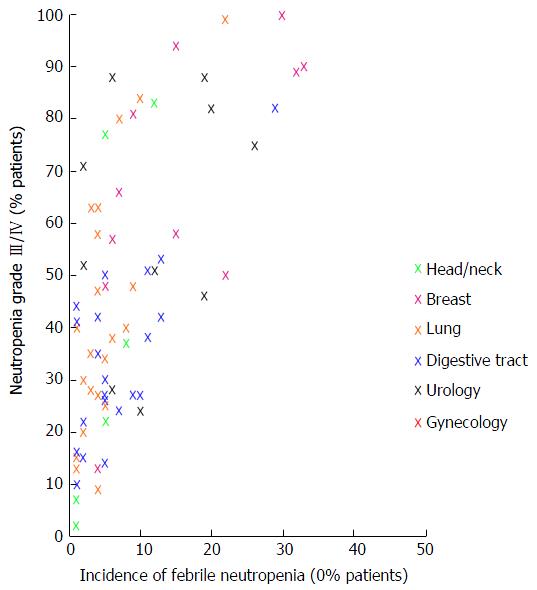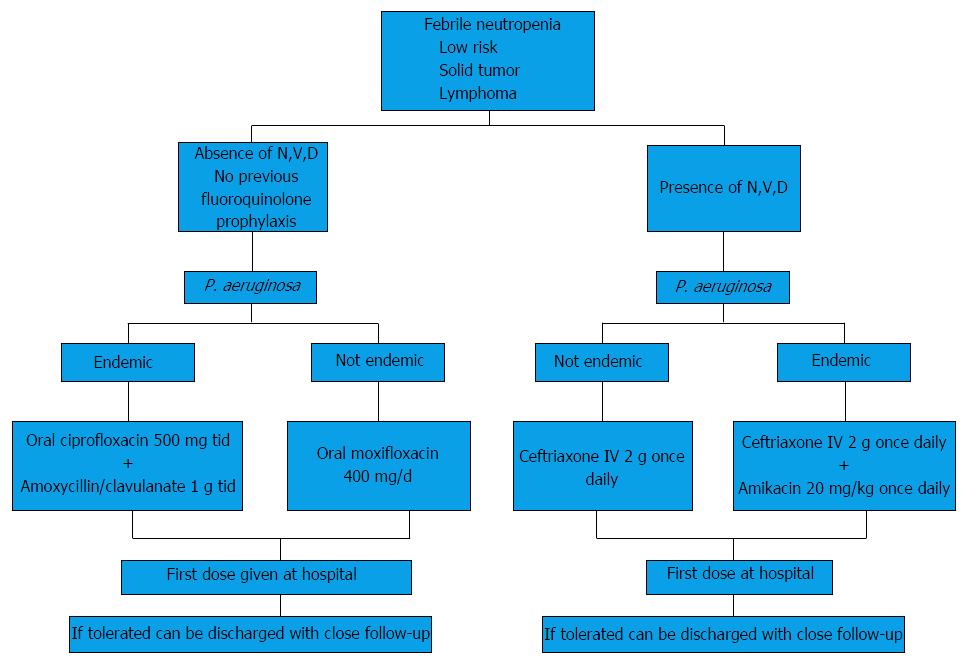Copyright
©The Author(s) 2016.
World J Clin Infect Dis. Aug 25, 2016; 6(3): 37-60
Published online Aug 25, 2016. doi: 10.5495/wjcid.v6.i3.37
Published online Aug 25, 2016. doi: 10.5495/wjcid.v6.i3.37
Figure 1 Algorithm to decide primary prophylactic granulocyte colony-stimulating factor usage.
Adapted from European Organization for Research and Treatment of Cancer Guidelines. Data taken from[13]. FN: Febrile neutropenia; G-CSF: Granulocyte colony-stimulating factor.
Figure 2 Relationship between the occurrence of febrile neutropenia and the severity of granulocytopenia.
Figure 3 Decision tree for the administration of antibiotic therapy to low-risk patients with febrile nerutropenia.
N: Nausea; V: Vomiting; D: Diarrhea; P. aeruginosa: Pseudomonas aeruginosa.
Figure 4 Decision tree for administration of antibiotics to high-risk patients with febrile neutropenia.
ESKAPE: E. coli, S. aureus, Klebsiella sp. Acinetobacter sp, P. aeruginosa, Enterococcus sp; ESBL: Extended-spectrum β-lactamase; MRSA: Methicillin-resistant S. aureus; VRE: Vancomycin-resistant enterococci; HSCT: Hematopoietic stem cell transplant patients; P. aeruginosa: Pseudomonas aeruginosa.
- Citation: Klastersky J, Paesmans M, Aoun M, Georgala A, Loizidou A, Lalami Y, Dal Lago L. Clinical research in febrile neutropenia in cancer patients: Past achievements and perspectives for the future. World J Clin Infect Dis 2016; 6(3): 37-60
- URL: https://www.wjgnet.com/2220-3176/full/v6/i3/37.htm
- DOI: https://dx.doi.org/10.5495/wjcid.v6.i3.37
















